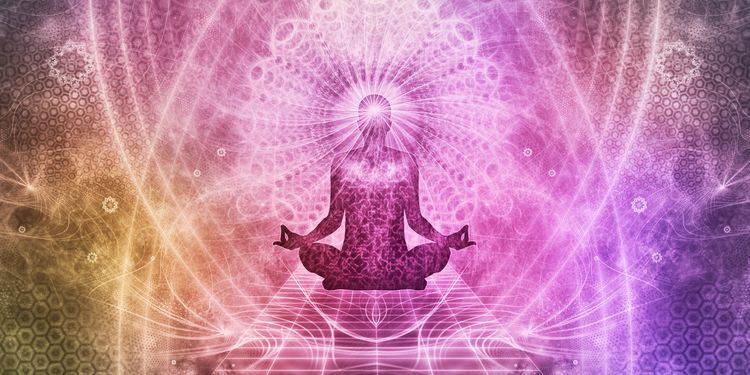The Quick And Dirty Guide To Homeopathy
As consistent readers probably already know, I’m an herbal medicine fanatic. I absolutely love exploring herbal treatments for different disorders and the process of making medicine from herbs. Although I’m still in naturopathic medical school, I feel like I’m getting quite comfortable with coming up with hypothetical herbal prescriptions.
But for this article, I’m going to take a detour from my herbal comfort zone, so to speak. I’m going to dive into an equally fascinating but completely different system for treating disease.
Enter homeopathy.
Some of you may already be familiar with homeopathy and the theories behind how homeopathic remedies work. Others may already use homeopathic remedies without even knowing what they’re really all about. And there’s likely a large subset of people who are familiar with the theories but aren’t convinced of the scientific plausibility, ascribing any clinical benefits of homeopathy to the placebo effect.

So, What is Homeopathy?
The word “homeopathy” is derived from the Greek root words homoios, meaning “similar,” and pathos, meaning “suffering” or “disease.” This translation exemplifies the foundational tenant of homeopathic philosophy that “like cures like.”
Before we get into the significance of likes curing likes, it’s important to understand the context in which homeopathic medicine was developed.
The founding father of homeopathy was a medical doctor from the early 1800s named Samuel Hahnemann. Hahnemann wasn’t impressed by the conventional medical approach of the time, which included things like bloodletting and poisoning patients with heavy metals. Although that’s not surprising to us today, Hahnemann’s concerns were actually counter-cultural in his day.
Hahnemann wanted a more substantiated and empirically driven “evidence-based” approach to treating disease. Through his own self-experimentation with highly toxic materials, he started exploring and documenting this concept of likes curing likes.
Hahnemann noticed that a specific material would produce a specific disease picture (that was usually extremely unpleasant) when taken internally. But what he also found was that when he made extremely dilute solutions of these same substances, the diluted remedies could be used as powerful antidotes for the very same illnesses that the substances would normally cause in higher doses.
Let me give you an example.
A common homeopathic remedy used today for violent onset fevers or pulsating migraines is Belladonna. Belladonna is derived from the botanical Atropa belladonna, or “deadly nightshade.” As its name implies, deadly nightshade is highly toxic and can cause death if taken in high enough amounts.
When taken in its non-diluted whole plant form, Belladonna causes symptoms of fever, hallucinations, and pulsating migraines. The homeopathic preparation of Belladonna would then be used to treat these same symptoms that show up in a patient from some other undetermined cause.
This demonstrates the concept of likes curing likes. A patient presents with a particular set of mental, emotional, and physical symptoms and is assigned a homeopathic preparation of a material that, in large enough doses, would create the most similar disease presentation in a healthy individual.

Homeopathy is Over 200 Years in the Making
What started out as an n=1 experiment by one medical doctor has now morphed into a unique medical art with over 200 years of documentation in the form of the two main homeopathic texts, the Materia Medica and the Repertory.
The Materia Medica lists the disease pictures of each of the homeopathic remedies that have been compiled by various “provings.”
These provings consist of groups of subjects taking doses of the material in question in large enough amounts to provoke mental, emotional, and physical symptoms. The provoked symptoms are documented and used to create a symptom picture for the tested material. Provings are conducted in order to get a good idea of what symptoms specific materials would cause so that they can be more accurately matched with disease presentations in patients.

The Repertory is a tool that makes navigating patient symptoms and the Materia Medica much easier. The repertory is essentially an extremely organized list of symptoms and the corresponding remedies that have been “proven” to produce that particular symptom.
So, let’s say your patient has a headache that’s pulsating in the temples and worse with motion. You can search each symptom separately in the repertory: pulsating headache, headache in the temples, and headache worse with motion. You’ll find three separate lists of remedies.
What we’re looking for here is a common remedy for most important symptoms of the patient.
This where the art comes in. It takes a lot of practice to determine how to weigh each symptom. It also takes a lot of cases to get good at knowing what questions to ask and how to ask them so you don’t miss important information for assigning a remedy.

It’s All in the Preparation: How the Remedies are Made
There’s a very specific way in which the remedies are diluted that’s thought to contribute to their action in the body.
Classically, the remedies are prepared using glass vials and are diluted with water.
After the remedy has been diluted by a ratio of (usually) 1:100 upwards of 200 times, the remedy is put in alcohol or incorporated into sugar pills to preserve it.
Between each round of dilution, there’s a round of “sucussion.” Sucussion is a vigorous shaking/agitation of the vial. With each dilution, the remedy is thought to become more potent because of this sucussion action.
Yes, you read that right. The more dilute the remedy, the more potent it is. In fact, most homeopathic remedies have no detectable amount of the original remedy material.

So If There’s Nothing in It, How Does It Work?
You can see how the above ideology might make homeopathy vulnerable to attack from the conventional scientific community.
The principles of homeopathy are directly counter to our modern scientific method. In the western scientific mindset, everything must be quantifiable, measurable, and demonstrate a cause-and-effect relationship in order to be scientific.
Furthermore, the concept of likes curing likes is directly counter to the conventional “anti” approach to treating disease. We give antibiotics, antihypertensives, cholesterol blockers, and sedatives. Even some herbal medicines work in a similar fashion.
The argument is that if there’s nothing in the remedies aside from the alcohol and sugar used to preserve them, the remedies couldn’t possibly affect the body as anything more than a placebo.

Yes, the act of taking a pill, regardless of its chemical effects, can have a physical influence on the body. This demonstrates a pretty powerful mind-body connection. And it shows that there’s probably a placebo effect in most, if not all, medical interventions.
But is that all that’s going on in these homeopathic remedies?
The jury’s still out on this one, and it’s quite an impassioned debate from both sides of the argument, which makes it difficult to come up with a definitive answer.
But scientist supporters of homeopathy, like Iris Bell, MD, PhD, have made impressive strides in substantiating homeopathic principles beyond their placebo effects. What she and others have come up with is fascinating and will stretch the limits of science beyond simple chemical mechanics and cause-and-effect reactions. This research explores nanoparticles, the memory capacity of water, and the complex adaptive system of the human body.

After all, the human body isn’t just the sum of all its chemical reactions. You can’t just take us apart and then put us back together like a machine. We may actually benefit greatly from a medicine that can affect not just one or a few chemical reactions, but a higher organizing force that may be running the show.
